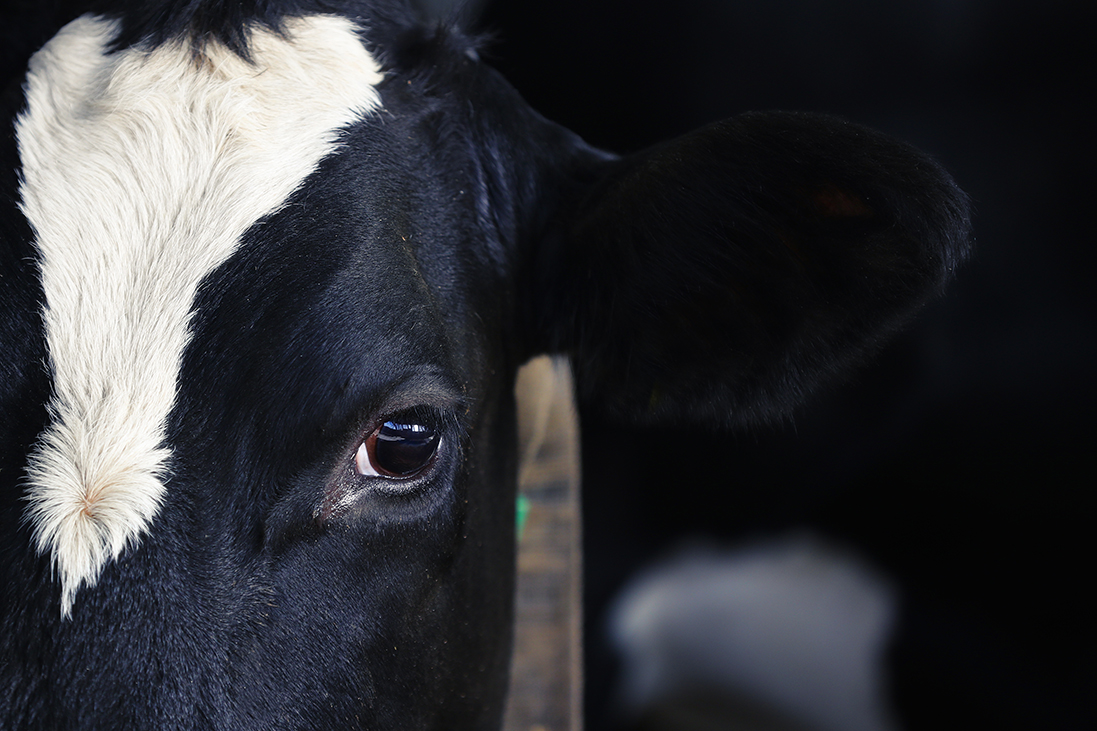Combination therapy for infectious ophthalmic and respiratory disease in kittens
Karen Vernau and others, University of California, Davis
Infectious upper respiratory tract disease is a major health problem for kittens in welfare shelters and breeding catteries. Various pathogens may be involved, including viral agents such as feline herpesvirus and calicivirus, which can also cause severe ophthalmic disease. The authors describe a large-scale randomised placebo-controlled trial comparing the effectiveness of an ophthalmic and oral antibiotic treatment (doxycycline) given alone or in combination with the oral antiviral agent, famciclovir. Their results show that the addition of famciclovir to the standard antibiotic treatment may reduce corneal disease, length of stay and time to adoption for shelters and rescue organisations. Early administration of famciclovir in kittens showing mild clinical signs appears to be important to prevent more severe clinical manifestations.
Journal of Feline Medicine and Surgery
Novel sulcus fixation technique for inserting acrylic lenses into canine eyes
Jaesang Ahn, Animal Eye Clinic, Seoul, South Korea
The insertion of an acrylic intraocular lens is a well-established technique for restoring vision in dogs that have become blind due to various ophthalmic conditions. However, standard techniques may be unsuitable in some patients, such as those with a posterior capsule defect. The author describes a technique for inserting a proprietary endocapsular lens into the ciliary sulcus, the small groove between the base of the iris and the anterior surface of the ciliary body. The technique involves the insertion of the lens through a 3mm corneal incision, which causes less trauma than conventional methods. In canine patients treated by the author, there was a 74.3 percent success rate in restoring normal vision (26/35 cases). Retinal detachment was the main complication leading to treatment failure (four cases), followed by glaucoma (three cases) and hyphaema of unknown origin and severe uveitis accompanied by a deep corneal ulcer (one case each).
Veterinary Ophthalmology, 28, 100-113
Treatment of iris hypoplasia using a semiconductor diode laser in standing horses
Ethan Hefner and others, Auburn University, Alabama
Iris hypoplasia is usually considered to be a minor and non-progressive condition that is not associated with pain or impaired vision. However, it is now apparent that the condition can lead to a variety of presentations. In cases with marked iris atrophy, changes in aqueous humour flow can cause the iris stroma to be pushed anteriorly, causing adhesions (synechiae) with the inner surface of the cornea. The authors describe two unusual cases of iris hypoplasia in an aged American Quarterhorse and an 11-year-old pony mare treated with a semiconductor diode laser to remove the hypoplastic iridal tissue. They report that the technique was effective in eliminating anterior synechiae in both cases. The superior functional results achieved in the second patient suggests that early intervention may result in more favourable outcomes.
Case Reports in Veterinary Medicine
Feline ocular and respiratory infection cases submitted to a diagnostic lab
David Neely and others, University of Georgia, Tifton
Cats are vulnerable to a range of pathogens that may cause a combination of respiratory and ocular signs. In practice, treatment will often proceed on the basis of a presumptive diagnosis, as further testing can be time-consuming and expensive. The authors describe a retrospective analysis of cases in which samples from affected cats were sent to a university diagnostic laboratory. These were analysed using polymerase chain reaction (PCR) panels for common feline ocular (feline herpesvirus (FHV), feline calicivirus (FCV) and Chlamydia felis) and respiratory (FHV, FCV, C. felis, Mycoplasma species, Bordetella bronchiseptica and influenza A virus) pathogens. FHV and FCV were detected most frequently by the ocular panel and Mycoplasma or Mycoplasma/FCV by the respiratory panel. They suggest that FCV and FHV vaccines should be routinely offered by veterinarians, and they may also need to consider the likelihood of Mycoplasma in feline disease.
Journal of Feline Medicine and Surgery Open Reports
Use of ultrasound biomicroscopy to assess the anterior anatomy of the canine eye
Donghee Kim and others, Chungbuk National University, South Korea
Ultrasound biomicroscopy (UBM) is a technique first described in the 1990s that uses high-frequency 35 to 100MHz ultrasound to create high-magnification images of the anterior segment of the human eye. The methods have proved extremely useful in advancing research into glaucoma and in the diagnosis of lens subluxation. The authors review the potential applications of these methods in exploring the anatomy of the canine eye, particularly focusing on the iridocorneal angle and the ciliary body. Their report analyses the parameters obtainable via UBM, emphasising its potential in monitoring drug-induced ocular changes, gauging the outcomes of cataract surgery and observing inter-species variations. They also note the paucity of published information on the application of UBM in studies on the feline eye.
Frontiers in Veterinary Science, 12
Phacoemulsification of a cataract with lens regeneration in a juvenile ferret
Brittany Schlesener and others, Cornell University, Ithaca, New York State
Cataracts have often been reported as an ocular condition in ferrets, but the small size of these animals makes standard phacoemulsification treatment challenging. The authors describe the successful management of a unilateral immature nuclear cataract in a one-year-old female ferret by phacoemulsification. The procedure was performed without complications and vision was restored in the affected eye. However, the patient was re-examined 4.5 months later after signs of blepharospasm were detected. Evidence of lens regrowth and anterior uveitis were found, requiring a second surgical procedure. Medical management improved the uveitis, while lentoid irrigation and aspiration was performed six months after the initial procedure. At a subsequent re-examination no new lens material was detectable.
Journal of Exotic Pet Medicine, 51, 5-8
Feasibility of using 2D shear wave elastography to evaluate the lens in canine eyes
Giovanni Aste and others, University of Teramo, Italy
Fibrosis and solid tumours are among the medical conditions that will affect the elasticity of bodily organs. Two-dimensional shear wave elastography has emerged as a useful technique in veterinary medicine that allows clinicians to examine the stiffness of particular tissues in a non-invasive way. The authors used the technology to investigate the crystalline lens in healthy dogs. Dogs in three age groups (juveniles under 1.5 years, mature dogs aged 1.5 to 7 years and older animals aged 7 years or more) were examined by two operators. There were minor differences in tissue elasticity results with the two operators, but the reliability and reproducibility of the technique was generally good. Their findings provide baseline data for further studies on the effect of ageing on lens stiffness.
In vivo confocal microscopy in detecting and managing ocular surface disease
Eric Ledbetter, Cornell University, Ithaca, New York State
In vivo confocal microscopy is a novel imaging technique that allows non-invasive investigations of the ocular surface at a cellular level. These instruments are capable of imaging corneal microstructures at different depths of the tissue and provide insights into the biological functions of different neuronal and immunological constituents of the cornea. The author reviews the various established and potential clinical applications for the technology in small animal medicine. These include studies on infectious keratitis, corneal foreign bodies, corneal dystrophies and degenerations, ocular surface masses, corneal endotheliitis, pigmentary keratitis and evaluations of the corneal nerves.
Journal of the American Veterinary Medical Association, 262, S7-S14










